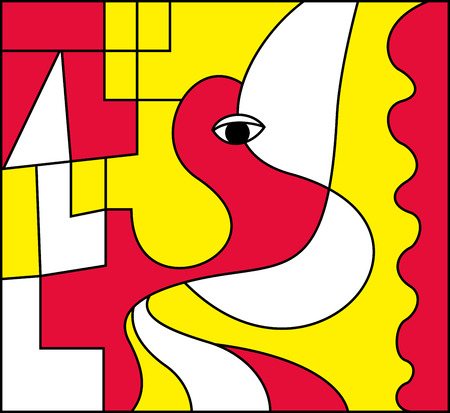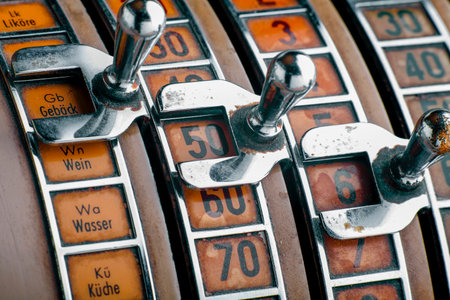Introduction to Classic Hand Types in British Culture
When it comes to the art of hand reading, the concept of the four classic hand types—Earth, Air, Fire, and Water—has long captured the imagination of those fascinated by both science and mysticism. In the context of British culture, these elemental archetypes have woven themselves into folklore, literature, and even popular psychology. Historically, the study of palmistry, or chiromancy, found eager audiences across the UK from Victorian parlours to contemporary wellness circles. The classification of hand types based on their elemental attributes is not only a tool for self-reflection but also a reflection of Britain’s fascination with character and destiny. Each type—Earth, Air, Fire, and Water—carries distinct physical features and symbolic associations that mirror the British appreciation for personality quirks, social roles, and even the temperamental weather. This introduction sets the stage for a deeper dive into how these ancient archetypes continue to resonate within modern British society, inviting us to explore what our hands might reveal about who we are in the uniquely British context.
2. Earth Hands: The Practical Spirit of the British Isles
When we examine the Earth hand type through the distinctly British lens, a fascinating alignment emerges between these grounded traits and traditional values woven deep into the nation’s cultural fabric. Earth hands are easily recognised by their square palms and fingers, robust build, and pronounced knuckles—a physicality echoing the stoicism and reliability often celebrated in British society.
Earth Hand Traits and British Traditions
What truly sets the Earth hand apart is its embodiment of stability, practicality, and an unpretentious approach to life. These qualities resonate with the time-honoured British appreciation for craftsmanship, whether found in the stone cottages of the Cotswolds or the meticulous gardens of Kent. The steady, practical spirit of those with Earth hands mirrors the work ethic that built industries from Sheffield steel to Cornish tin mining.
Key Characteristics: Earth Hands vs. British Values
| Earth Hand Trait | Traditional British Value | Everyday Example |
|---|---|---|
| Stability | Reliability | A craftsman consistently producing quality work |
| Pragmatism | Common Sense | Making do and mending rather than replacing |
| Simplicity | Unpretentiousness | Choosing a classic cup of tea over fads |
| Physical Strength | Endurance | Long walks across moors regardless of weather |
The Enduring Appeal of Practical Wisdom
From the understated wit of British humour to the ‘keep calm and carry on’ mentality, those with Earth hands naturally find themselves at home in environments where common sense prevails over extravagance. It is no coincidence that some of Britain’s most cherished figures—gardeners, builders, bakers—are revered not for flashiness but for their quiet mastery and resilience. The Earth hand, in essence, is a living testament to the enduring strength and modest wisdom that continues to define the British Isles.

3. Air Hands: Intellectual Currents across Britain
Among the classic hand types, Air hands stand out for their long fingers and square palms—a physical metaphor for intellectual curiosity and a penchant for clarity in communication. In the British context, these attributes find a perfect echo within the nation’s enduring legacy of academia, literature, and robust debate. If Earth hands are rooted in tradition, then Air hands thrive on ideas swirling like the winds across Oxford quads or along the bustling corridors of Parliament.
Those with Air hands often display restless minds, ever questing for knowledge and nuanced perspectives. This resonates powerfully with Britains historical reputation as a cradle of thought, from the hallowed halls of Cambridge to the lively gatherings at Speaker’s Corner. The British love for witty banter, critical discourse, and literary excellence can be seen as an outward expression of Air qualities—valuing words not merely as tools, but as art forms in themselves.
Consider how the likes of Virginia Woolf or Sir Isaac Newton exemplified this archetype; both were possessed by an insatiable desire to question, explore, and articulate complex concepts. In everyday life, Air-handed Britons might gravitate towards careers in teaching, writing, journalism or even politics—professions that reward eloquence and sharp thinking. The ability to dissect an argument over a cup of tea or pen a letter full of understated irony reflects this hand type’s subtle power.
In essence, Air hands mirror Britain’s collective intellect: always questioning, never quite settling, and forever finding new channels through which to express its cerebral currents. It is this very spirit that keeps British culture vibrant—a society where debate is encouraged and creative thought is celebrated at every turn.
4. Fire Hands: The British Flair for Innovation
Fire hands are easily recognised by their long palms, short fingers, and prominent lines—an expressive combination that often signals a person brimming with energy, passion, and boldness. In the British context, this hand type embodies the nation’s celebrated spirit of innovation and its centuries-old tradition of creative leadership. From Shakespeare’s literary genius to the trailblazing vision of innovators like Sir Tim Berners-Lee, Fire hands echo through the stories of those who have shaped British culture and global progress.
The Fiery Traits: Creativity and Courage in Action
Those with Fire hands are typically described as dynamic, decisive, and unafraid to challenge convention—a trait much admired in Britain’s history of social transformation. Whether it is leading movements for change or pioneering new artistic forms, individuals with these hands are frequently found at the forefront of cultural revolutions. Their natural charisma and confidence make them effective communicators, inspiring those around them and pushing boundaries in fields ranging from literature to science.
Icons of British Fire Hands
| Name | Field | Notable Contribution |
|---|---|---|
| Winston Churchill | Leadership | Steadfast wartime Prime Minister renowned for his rousing speeches and resolve during WWII |
| Dame Vivienne Westwood | Fashion & Culture | Punk fashion pioneer who revolutionised British style with fearless creativity |
| Sir Tim Berners-Lee | Technology & Innovation | Inventor of the World Wide Web, transforming global communication forever |
| Emmeline Pankhurst | Social Change | Suffragette leader whose fervour powered the movement for womens voting rights |
A Modern Take on Fire Hands in Britain Today
The presence of Fire hands in modern Britain is perhaps most visible in the country’s vibrant start-up culture, its daring arts scene, and its continued leadership in scientific discovery. The passionate drive characteristic of this hand type aligns seamlessly with a society that values both tradition and transformation. If you find yourself drawn to risk-taking or sparking new ideas in your community, you may well be channeling the unmistakable British flair of Fire hands.
5. Water Hands: Emotional Depth in British Life
Unpacking the Intuitive and Sensitive Nature of Water Hands
Water hands, marked by long palms and slender fingers with delicate skin, are often associated with intuition, empathy, and emotional awareness. In palmistry, these hands are believed to belong to those who feel deeply and possess a refined sensitivity to their surroundings. Within the British context, this classic hand type resonates profoundly with the nation’s understated approach to emotion—where feelings run deep but are rarely worn on one’s sleeve.
The Quiet Strength of British Emotional Intelligence
Britain is renowned for its ‘stiff upper lip’—a cultural hallmark that champions restraint and composure over dramatic displays of emotion. Yet, beneath this exterior lies a rich tapestry of feeling and empathy. Individuals with Water hands may find themselves naturally attuned to this subtle emotional undercurrent. They navigate social situations with an intuitive understanding of unspoken cues, reading between the lines in conversation, and responding with gentle tact rather than overt sentimentality.
Navigating Relationships in a Reserved Society
In a country where direct emotional expression can sometimes be viewed as uncomfortable or even impolite, those with Water hands excel at forging deep connections through quiet support and thoughtful listening. Their capacity for compassion shines in moments that require sensitivity—whether it’s offering a comforting cuppa during trying times or simply being present without fanfare. This emotional intelligence is often channelled into creative pursuits, from poetry to music, allowing Water-handed Britons to express what words alone might fail to convey.
Ultimately, the presence of Water hands within British society highlights the coexistence of reserve and profound feeling—a reminder that true empathy often thrives not in grand gestures but in small, meaningful acts that echo through everyday life.
6. Identifying and Applying Hand Types in Modern Britain
In the bustling tapestry of modern British life, the four classic hand types—Earth, Air, Fire, and Water—remain more than mere curiosities; they offer subtle insights into our daily interactions, choices, and even our collective national character. Recognising these archetypes isn’t about fortune-telling at your local pub or tea room; it’s about observing the nuanced ways people express themselves through gesture, touch, and action.
Everyday Encounters: Spotting Hand Types on the Tube and Beyond
Picture your daily commute on the Underground: the firm handshake of an Earth-handed commuter clutching a newspaper, their square palms echoing reliability; the expressive flurry of a Fire type gesturing animatedly during a heated conversation; or perhaps the slender, dexterous fingers of an Air hand rapidly scrolling through their phone. Even in Britain’s famously reserved social settings, these archetypes manifest quietly but distinctly.
Applying Hand Type Wisdom to Contemporary Life
Understanding hand types can enrich how we relate to others. In workplaces from London to Manchester, managers who recognise an employee’s hand type might better appreciate their communication style or preferred work environment. The creative Water-handed artist may thrive in flexible roles, while pragmatic Earth hands excel in structured routines. This awareness fosters empathy and collaboration—a nod to that British knack for both tradition and adaptability.
Reflections: What Do These Archetypes Say About Us?
In a society balancing centuries-old customs with modern multiculturalism, these hand types remind us that diversity is woven into our very being. Whether you’re analysing hands over a pint or simply reflecting on your own traits, such archetypes invite us to celebrate individuality within community. In true British fashion, perhaps it’s not about rigidly categorising ourselves—but embracing the quirks that make each hand, and each person, uniquely part of the national story.


